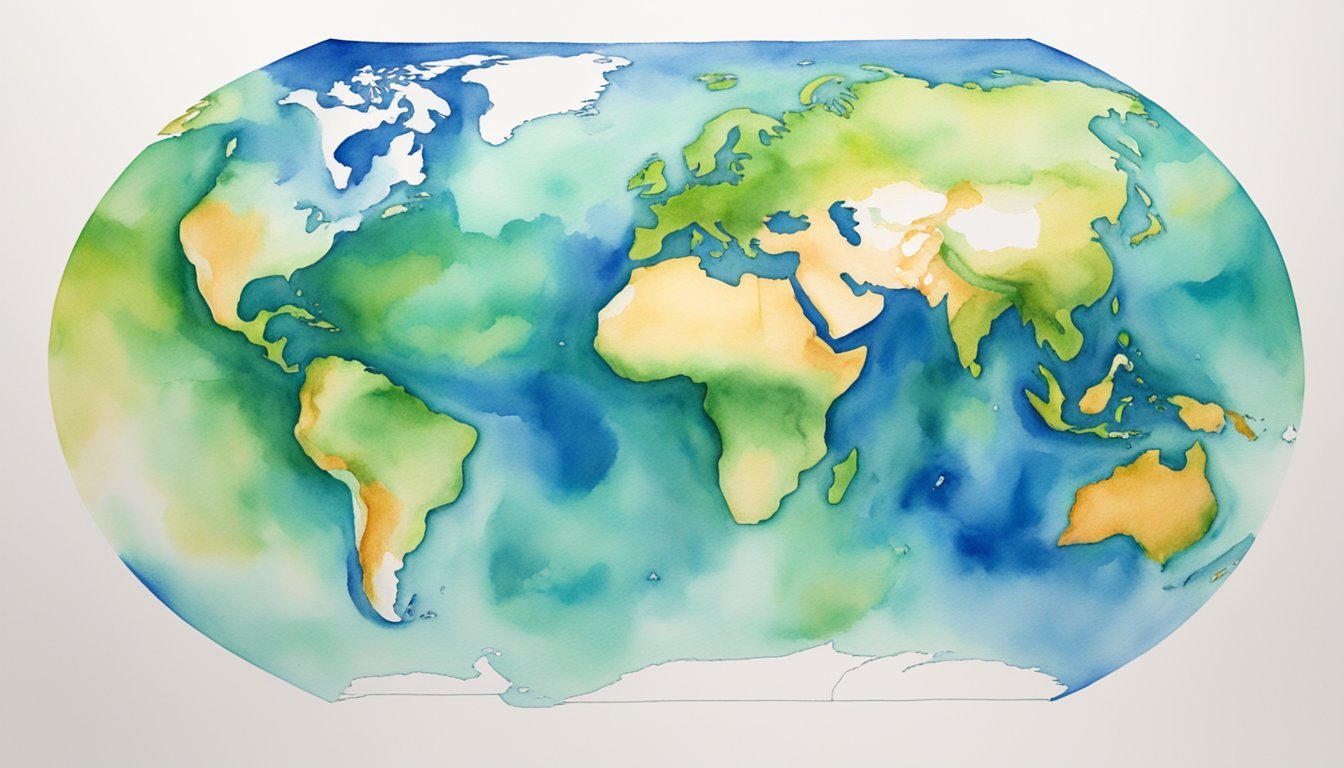Understanding Earth’s Axis Shift
The Earth’s axis is subject to drift and wobble over time, influenced by various factors including melting glaciers and geological activities.
Causes of Axis Drift
The movement of Earth’s axis, known as polar drift, has been affected by several factors. For instance, recent studies show that melting glaciers, a consequence of global warming, are redistributing mass across the planet. As massive amounts of ice melt, the loss of weight from the polar regions and addition of water to other parts of the Earth causes a shift in how the planet rotates. Additionally, activities within the Earth, such as the convection of hot rock in its mantle, contribute to axis shift. The Gravity Recovery and Climate Experiment (GRACE) satellites have provided data that highlight these shifts, attributing changes not just to ice melt but also to other factors like glacial rebound – the rise of land masses that were depressed by the weight of ice sheets during the last glacial period.
Measuring the Shift
Advances in technology have facilitated precise measurements of the extent to which the Earth’s axis shifts. Techniques involve analyzing satellite data, such as those from GRACE, and other celestial observations, which can detect minor changes in the axis of rotation. Earth’s axis drift has been recorded at an average of about 4 inches (10 centimeters) per year over the 20th century. Updated methods continue to refine these measurements, assisting scientists in tracking the ongoing polar shift.
Impacts on Day Length and Seasons
The drift of Earth’s axis has tangible effects on our planet. Notably, it can alter the length of a day, albeit marginally. For instance, the massive 2004 Asian tsunami altered Earth’s rotation slightly, shortening the day by 6.8 microseconds. The changes in mass distribution on the planet’s surface can also influence the axial tilt, which in turn affects the seasonal distribution of sunlight across the globe. As such, shifts in the Earth’s axis can impact climate patterns and the environment. Melting glaciers, in particular, are potential contributors to these shifts that can have far-reaching effects on seasons and ecological systems.
Human Influence and Global Response

Human activities, particularly groundwater extraction and the melting of ice, have a tangible impact on the Earth’s rotational axis. These changes, rooted in climate change, have prompted a global response through research and policy initiatives aimed at mitigating these impacts and enhancing understanding of Earth’s dynamic changes.
Effects of Groundwater and Ice Melt
Excessive pumping of groundwater for various needs, including drinking and irrigation, has contributed to shifts in the mass distribution on Earth. This mass change can alter the Earth’s spin axis, the imaginary line around which the planet rotates. A study published in the journal Geophysical Research Letters suggests that the lowered weight in the areas where groundwater is extracted can lead to a directional change of the spin axis. Similarly, the melting of Greenland’s ice, exacerbated by climate change, adds water to the oceans and redistributes the planet’s weight, impacting the rotational axis.
Policy and Research Developments
In response to these findings, scientific communities and policymakers are considering the role of human-induced changes to groundwater sources and polar ice melt. Researchers like Vincent Humphrey from the University of Zurich are investigating the implications of these shifts and the interconnected relationships of ocean currents, convection of hot rock in the mantle, and the movement of the North and South poles. This emphasizes the need for updated and robust policies aimed at managing groundwater reserves and addressing the broader challenges posed by climate change, in order to stabilize the Earth’s axial tilt and mitigate further distribution of mass across the globe.

